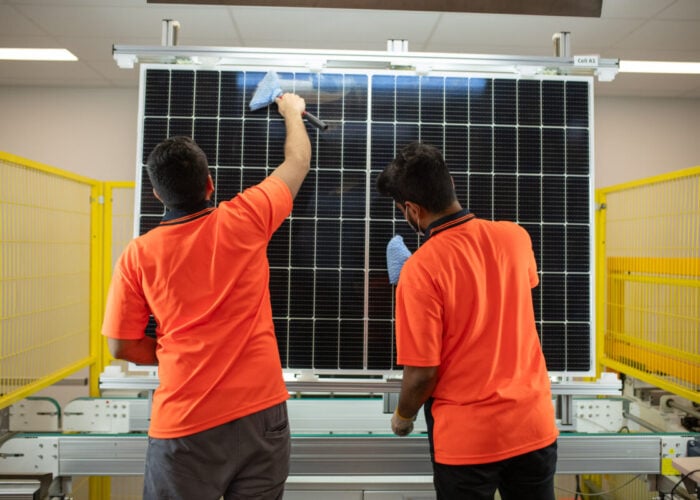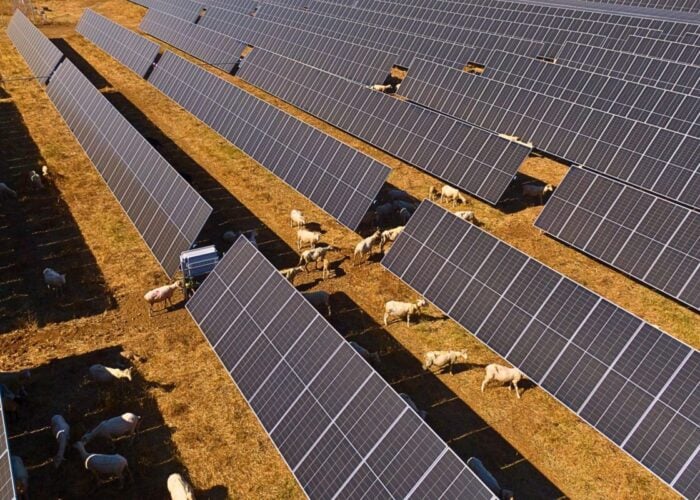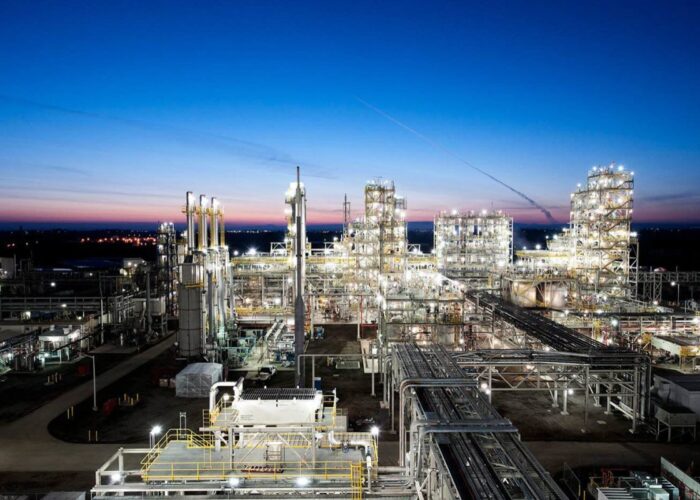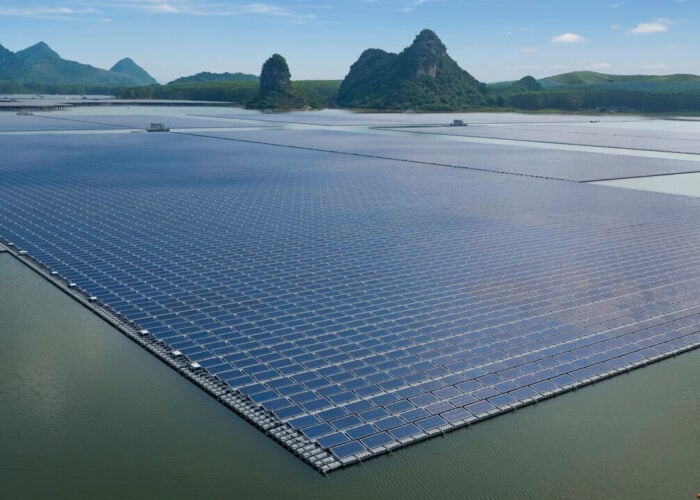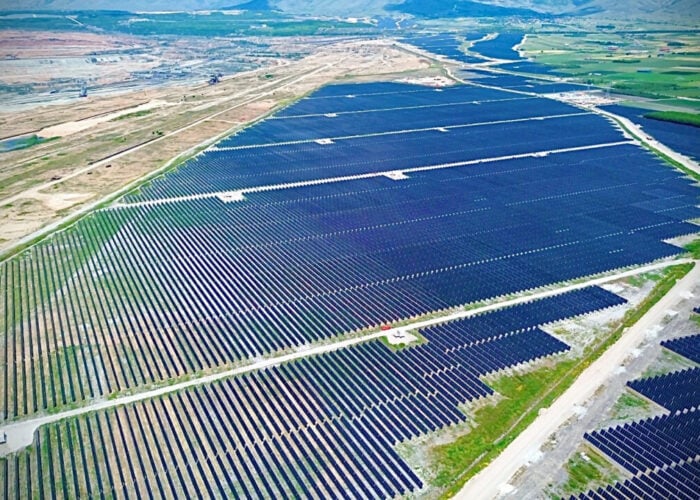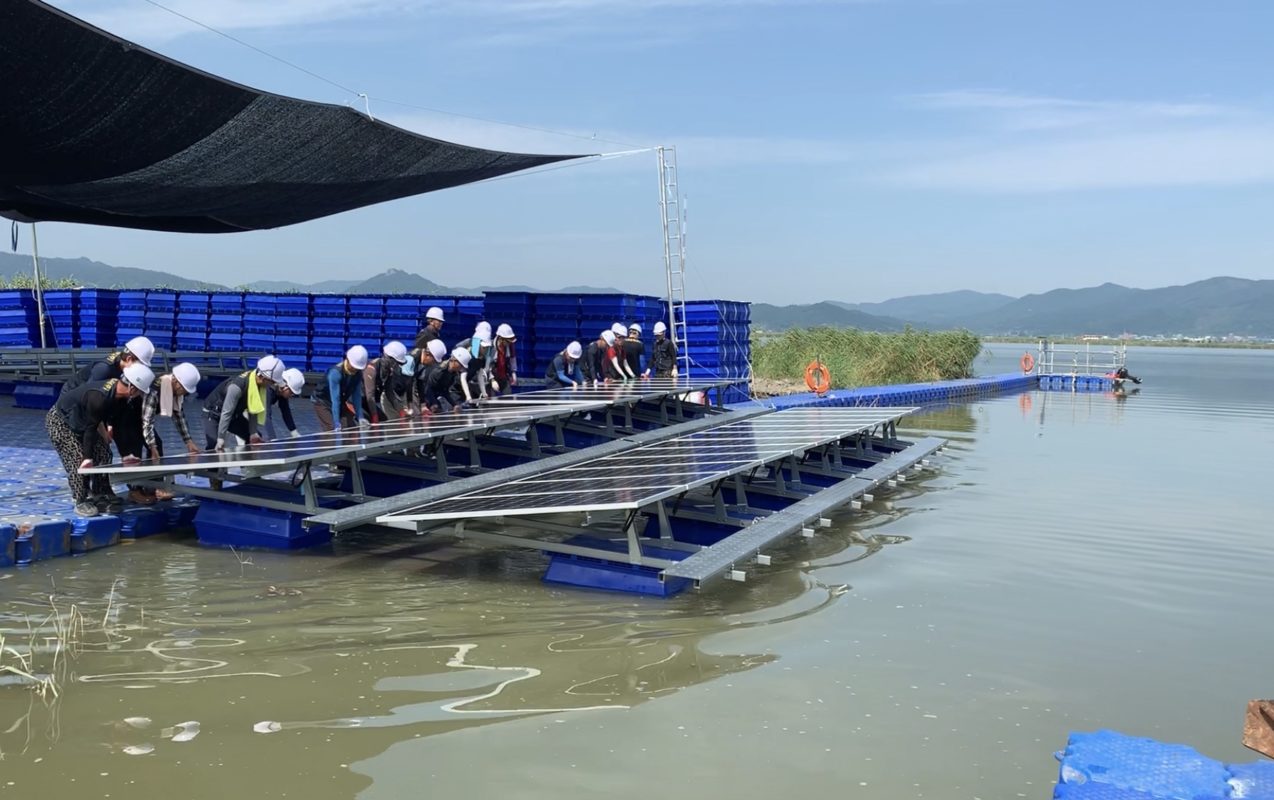
Work is now underway to deliver what is being billed as South Korea’s largest floating solar plant to date, an installation combining steel structures with polyethylene floats.
Earlier this week, Scotra kickstarted construction of a 25MW PV plant on the Namjeong lake in South Korea’s Jeonnam Province, along the country’s southern coast.
Unlock unlimited access for 12 whole months of distinctive global analysis
Photovoltaics International is now included.
- Regular insight and analysis of the industry’s biggest developments
- In-depth interviews with the industry’s leading figures
- Unlimited digital access to the PV Tech Power journal catalogue
- Unlimited digital access to the Photovoltaics International journal catalogue
- Access to more than 1,000 technical papers
- Discounts on Solar Media’s portfolio of events, in-person and virtual
The plant – delivered via a deal with South Korean renewable player TOPINFRA – will feature blue polyethylene floats, moored to the lake’s bottom via underwater cabling.
PV modules will be then rolled out atop POSCO's alloy steel structures, which Scotra claims are cheaper than aluminium yet highly resistant to corrosion.
The Namjeong-ho installation is meant to cover 10% of the lake’s 33-hectare surface once fully built, with completion expected next year.
Once up and running, the plant will generate enough solar output to cover the needs of 12,000 households and bring annual CO2 emission savings of 14,000 tonnes, Scotra said.
According to the developer, the 25MW project could once built become the world’s fourth-largest floating PV plant, surpassed only by three sites in China’s Anhui Province.
It could, Scotra added, be the top project of its kind in South Korea itself, overtaking the country’s current record-holder – a 18.7MW up-and-running plant in Gunsan – also deployed by the firm.
Tailwinds spur the global floating solar race
The South Korean news comes to breathe yet more life into an already budding global floating PV ecosystem, currently growing from the 1.1GW market size recorded last year by the World Bank.
Countries marking project milestones so far in 2019 include India (100MW), Singapore (50MW), Thailand (45MW), Malawi (20MW) Portugal (4MW), the Seychelles (3.5-4MW) and Dubai.
As reported by PV Tech at Intersolar 2019, the frontrunners' designs remain highly diverse, including solar boats, waterlily-like membranes, reservoir covers and co-location with hydro.
South Korea – which is fostering floating PV through extra bonuses for renewable certificates – holds alone an installation potential of 5.304GW, Scotra believes.
The country appears ready to seize the window more decisively, with the government announcing this year a 2.1GW floating scheme by the southwestern coastal dam of Saemangeum.
Founded in the early 2000s, Scotra completed a 500kW floating PV system in the Hapcheon Dam in 2012, following this with similarly sized moves across other South Korean water bodies.
The firm has taken its floating PV business model elsewhere in Asia, wrapping up various plants in Japan and bagging supply deals of around 9MW for Taiwanese schemes.
The developer is also carrying out R&D for 2.5MW of off-shore installations under a scheme run by South Korea’s state, set to cover 2020 through to 2022.


